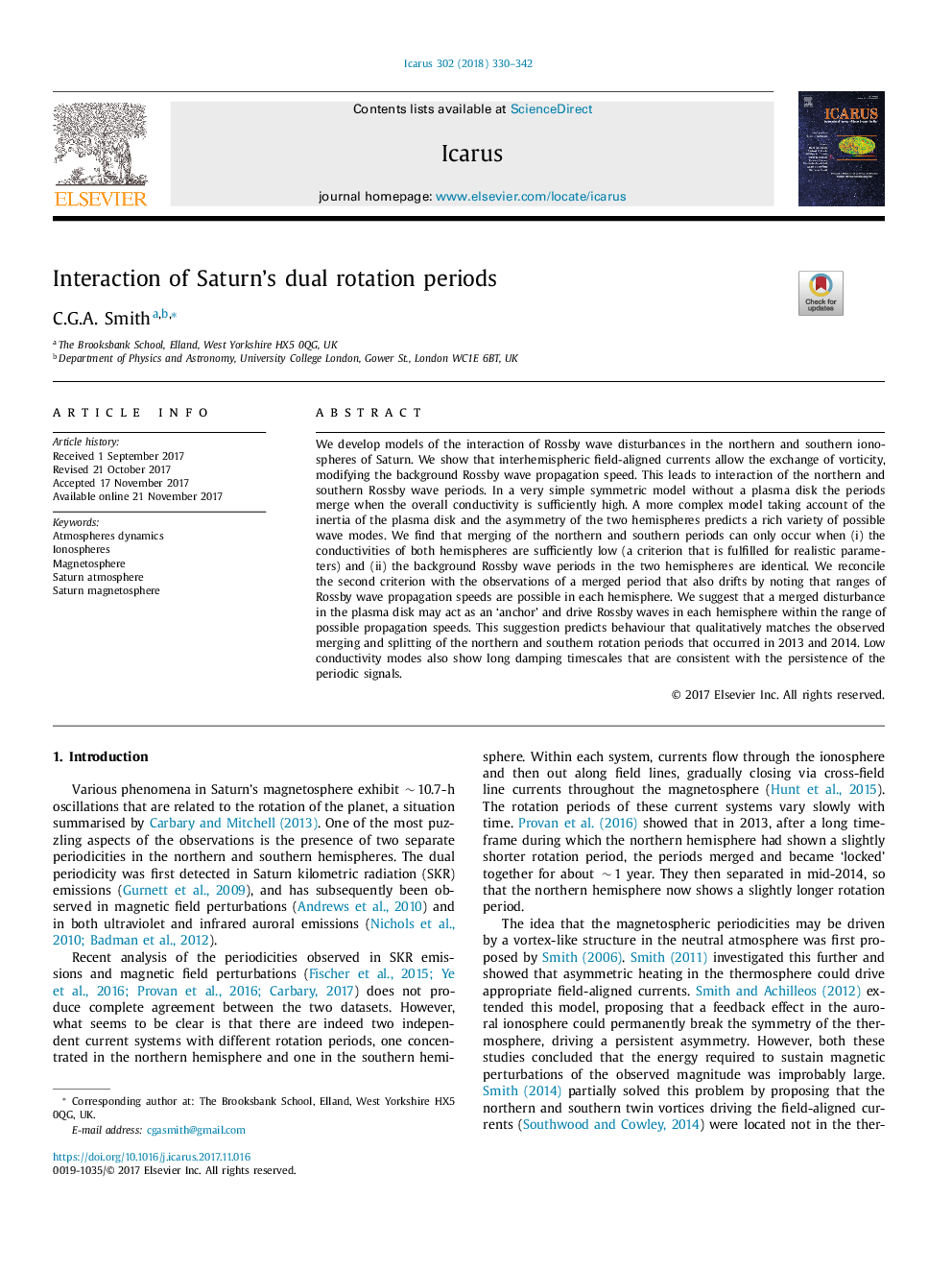| Article ID | Journal | Published Year | Pages | File Type |
|---|---|---|---|---|
| 8134574 | Icarus | 2018 | 13 Pages |
Abstract
We develop models of the interaction of Rossby wave disturbances in the northern and southern ionospheres of Saturn. We show that interhemispheric field-aligned currents allow the exchange of vorticity, modifying the background Rossby wave propagation speed. This leads to interaction of the northern and southern Rossby wave periods. In a very simple symmetric model without a plasma disk the periods merge when the overall conductivity is sufficiently high. A more complex model taking account of the inertia of the plasma disk and the asymmetry of the two hemispheres predicts a rich variety of possible wave modes. We find that merging of the northern and southern periods can only occur when (i) the conductivities of both hemispheres are sufficiently low (a criterion that is fulfilled for realistic parameters) and (ii) the background Rossby wave periods in the two hemispheres are identical. We reconcile the second criterion with the observations of a merged period that also drifts by noting that ranges of Rossby wave propagation speeds are possible in each hemisphere. We suggest that a merged disturbance in the plasma disk may act as an 'anchor' and drive Rossby waves in each hemisphere within the range of possible propagation speeds. This suggestion predicts behaviour that qualitatively matches the observed merging and splitting of the northern and southern rotation periods that occurred in 2013 and 2014. Low conductivity modes also show long damping timescales that are consistent with the persistence of the periodic signals.
Related Topics
Physical Sciences and Engineering
Earth and Planetary Sciences
Space and Planetary Science
Authors
C.G.A. Smith,
